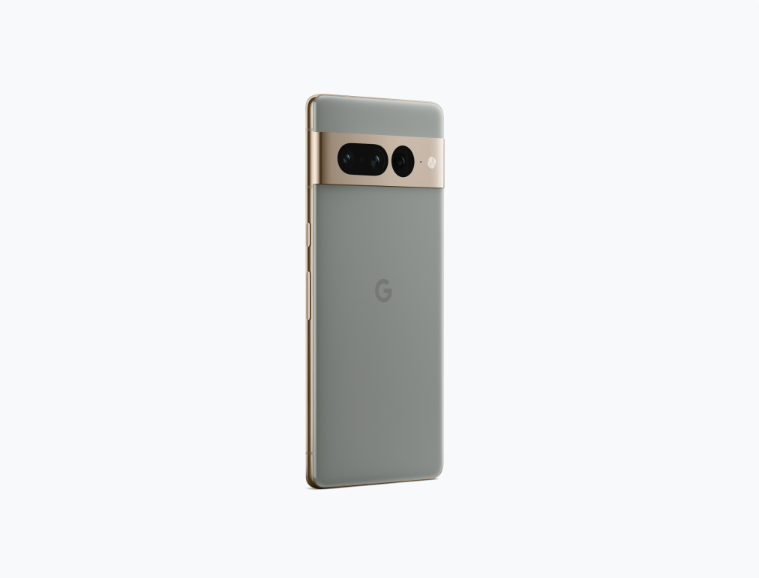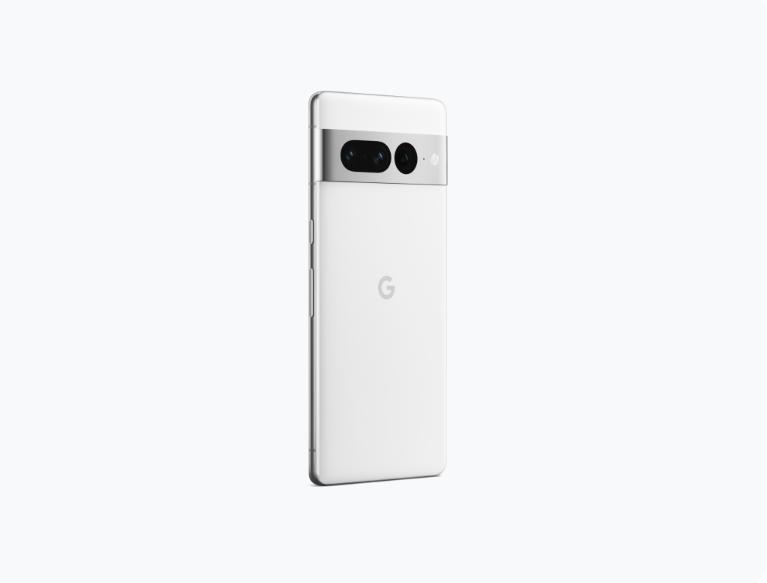After several months of teasers and brief sneak peeks, Google finally unveiled its flagship Pixel 7 lineup at its ‘Made by Google’ event earlier today.
The higher-end Pixel 7 Pro starts at $1,179 for the 128GB model and goes up to $1,439 for the 512GB storage variant. The device is available to pre-order today, Thursday, October 6th, and will release next week on Thursday, October 13th.
Before you decide to shell out $1,000+ for the new device, you might want to see how it squares up against the 2021-released Pixel 6 Pro, and if your needs warrant the absolute latest Pixel.
Pixel 6 Pro
Pixel 7 Pro
Display
6.7-inch, (1440 x 3120) LTPO AMOLED display, 512ppi, 120Hz refresh rate
6.7-inch, (1440 x 3120) QHD+ display, 512ppi, 10-120Hz refresh rate
Processor
Tensor
Tensor G2
RAM
12GB of RAM
12GB of RAM
Storage
128GB, 256GB
128GB, 256GB, 512GB
Dimensions (in.)
163.9 x 75.8 x 8.9mm
6.4 x 3.0 x 0.3in. (162.9 x 76.6 x 8.9mm)
Weight
210g
212g (7.5oz)
Rear Facing Camera
50-megapixel (primary) + 48-megapixel (telelphoto, x4 zoom) + 12-megapixel (ultrawide)
50-megapixel (primary) + 48-megapixel (telelphoto, x5 zoom) + 12-megapixel (ultrawide)
Front Facing Camera
11.1-megapixel
10.8-megapixel (ultrawide)
OS
Android 12
Android 13
Battery
5,000mAh
5,000mAh
Network Connectivity
LTE/ 5G
LTE/ 5G
Sensors
Fingerprint (in-display), accelerometor, gyro, proximity, compass
Fingerprint (in-display), Face Unlock, accelerometor, gyro, proximity, compass
SIM Type
Nano SIM, eSIM
Nano SIM
Launch Date
October 28, 2021
October 13, 2022
Misc
Colours: Cloudy White, Sorta Sunny, Stormy Black | IP68 water and dust resistance
Colours: Obsidian, Snow, Hazel
Display
Pixel 6 Pro
6.7-inch, (1440 x 3120) LTPO AMOLED display, 512ppi, 120Hz refresh rate
Pixel 7 Pro
6.7-inch, (1440 x 3120) QHD+ display, 512ppi, 10-120Hz refresh rate
Processor
Pixel 6 Pro
Tensor
Pixel 7 Pro
Tensor G2
RAM
Pixel 6 Pro
12GB of RAM
Pixel 7 Pro
12GB of RAM
Storage
Pixel 6 Pro
128GB, 256GB
Pixel 7 Pro
128GB, 256GB, 512GB
Dimensions (in.)
Pixel 6 Pro
163.9 x 75.8 x 8.9mm
Pixel 7 Pro
6.4 x 3.0 x 0.3in. (162.9 x 76.6 x 8.9mm)
Weight
Pixel 6 Pro
210g
Pixel 7 Pro
212g (7.5oz)
Rear Facing Camera
Pixel 6 Pro
50-megapixel (primary) + 48-megapixel (telelphoto, x4 zoom) + 12-megapixel (ultrawide)
Pixel 7 Pro
50-megapixel (primary) + 48-megapixel (telelphoto, x5 zoom) + 12-megapixel (ultrawide)
Front Facing Camera
Pixel 6 Pro
11.1-megapixel
Pixel 7 Pro
10.8-megapixel (ultrawide)
OS
Pixel 6 Pro
Android 12
Pixel 7 Pro
Android 13
Battery
Pixel 6 Pro
5,000mAh
Pixel 7 Pro
5,000mAh
Network Connectivity
Pixel 6 Pro
LTE/ 5G
Pixel 7 Pro
LTE/ 5G
Sensors
Pixel 6 Pro
Fingerprint (in-display), accelerometor, gyro, proximity, compass
Pixel 7 Pro
Fingerprint (in-display), Face Unlock, accelerometor, gyro, proximity, compass
SIM Type
Pixel 6 Pro
Nano SIM, eSIM
Pixel 7 Pro
Nano SIM
Launch Date
Pixel 6 Pro
October 28, 2021
Pixel 7 Pro
October 13, 2022
Misc
Pixel 6 Pro
Colours: Cloudy White, Sorta Sunny, Stormy Black | IP68 water and dust resistance
Pixel 7 Pro
Colours: Obsidian, Snow, Hazel
Display and design
The Pixel 6 Pro was Google’s first smartphone to feature a large 6.7-inch QHD+ display with a 512 ppi pixel density and a 120Hz refresh rate. The new Pixel 7 Pro offers a display setup identical to its predecessor, with a 6.7-inch display QHD+ screen with a 512ppi pixel density and the same adaptive 10-120Hz refresh rate.
Both devices have an always-on display and HDR support, alongside Corning’s Gorilla Glass Victus on the front and back and identical bezels
In terms of weight, the new Pixel 7 Pro is roughly 2g heavier than its predecessor, while maintaining roughly the same 163.9 x 75.8 x 8.9mm dimensions. The aluminum in both the Pixel 7 Pro’s phone enclosure, and the Pixel 6 Pro’s body is made of 100 percent recycled content. In the Pixel 6 Pro, however, recycled aluminum made up approximately 14 percent of the product based on weight, whereas with the Pixel 7 Pro, Google says, “recycled materials are approximately 19 percent of phone based on weight.”
One of the major design changes is visible on the rear of the Pixel 7 Pro. Although the new flagship retains the Pixel 6 Pro’s rear camera bar, it comes in a new metallic finish, instead of a glass finish, which offers the rear a dual-tone look, and makes the cameras prominently stand out.
Internals
The Pixel 6 series marked the beginning of Google’s experiment with its custom-made Tensor chips, and it’s safe to say the bet paid off. With the new Pixel 7 Pro, Google has updated the Tensor chip to a new Tensor G2, which according to Google, will “bring even more helpful, personalized features to photos, videos, security, and speech recognition.” Additionally, on paper, the updated chip should bring better battery efficiency to the device, alongside improved speech recognition.
Both devices feature the Titan M2 security chip, alongside consistent 12GB of RAM. On the storage side of things, the Pixel 7 Pro and the Pixel 6 Pro are both available in 128GB, 256GB and 512GB storage options.
Both devices feature identical-sized 5,000mAh batteries, which Google claims can last upwards of 24 hours, with the Pixel 7 Pro getting a maximum of 72 hours of uptime with ‘Extreme Battery Saver’ enabled, while the Pixel 6 Pro can last for a maximum of 48 hours with the same mode enabled.
![]()
Both devices feature fast charging, fast wireless charging, battery share capabilities and are IP68 dust and water-resistant.
The Pixel 6 Pro and the Pixel 7 Pro both feature an in-display fingerprint scanner, accelerometer, gyro, proximity sensors, and compass, though the latter also has support for Face Unlock, a feature a lot of Pixel 6 users have missed.
Camera
The Pixel 6 Pro and the new Pixel 7 Pro both feature an almost identical triple rear camera setup with a 50-megapixel ƒ/1.85 (primary) + 48-megapixel ƒ/3.5 (telephoto) + 12-megapixel ƒ/2.2 (ultrawide) sensor. The difference, however, is in the 48-megapixel telephoto camera’s zoom capabilities.
On the Pixel 6 Pro, the telephoto lens featured a 4x optical zoom, and a 20x ‘Super Res Zoom’, both of which have been upgraded to 5x optical zoom and 30x ‘Super Res Zoom,’ respectively, on the Pixel 7 Pro.
Another non-revolutionary change includes the ultra-wide camera’s field-of-view being increased to 125.8° on the Pixel 7 Pro from 114° on the Pixel 6 Pro. Other new camera features included with the Pixel 7 Pro include ‘Photo Unblur’ and ‘Macro Focus’ modes.
Below is a list of all the camera features that the two devices have in common:
- Night Sight
- Top Shot
- Portrait Mode
- Super Res Zoom
- Motion autofocus
- Live HDR+ Frequent Faces
- Dual exposure controls
- Cinematic Pan
- Ultrawide lens
- Portrait Light
- Magic Eraser
- Motion Mode
- Real Tone
- Face Unblur
- Panorama
- Manual white balancing
- Locked Folder
The front camera seems to have been downgraded, going from 11.1-megapixel f/2.2 on the Pixel 6 Pro to a 10.8-megapixel ƒ/2.2 camera on the Pixel 7 Pro. Both selfie cameras offer 1.22 μm pixel width, and the slight decrease in the Pixel 7 Pro’s pixel count should be offset by the Tensor G2’s advanced image processors and Google’s computational photography to improve the overall photo quality.
Today at #MadeByGoogle, we showed you how to get your photos #FixedOnPixel!
Blurry? We got you¹
Photobomber? Poof! Bye bye¹
Fix your photo on Pixel, regardless of what phone it was taken on.#MadeByGoogle
¹See video for info pic.twitter.com/h8MXaQKgyh
— Made By Google (@madebygoogle) October 6, 2022
Colours and pricing
When released back in 2021, the Pixel 6 Pro started at $1,179 and was available in ‘Stormy Black,’ ‘Cloudy White,’ and ‘Sorta Sunny’ colourways. The smartphone will likely receive a press drop soon and this story will be updated.
The Pixel 7 Pro is starting at the same price as the Pixel 6 Pro did: $1,179. The 256GB storage model starts at $1,309, whereas the 512GB model is available to pre-order for $1,439. Colour options include ‘Hazel,’ ‘Snow’ and ‘Obsidian.’
Is the new flagship for you?
The Pixel 7 Pro feels like an improved version of the Pixel 6 Pro, though it doesn’t feel like an entirely new-gen device. It features an almost identical display, with the same battery size, and the same RAM configuration.
Improvements on the camera side aren’t revolutionary, though we’ll have to get our hands on the device to see how much of a difference the Tensor G2 makes when it comes to photography, and overall device performance.
Elsewhere, the rear camera setup bar does look way cleaner and more premium than it did on the Pixel 6 Pro, and we’d imagine the metallic finish on the 7 Pro would also be more durable than the glass finish on the 6 Pro.
The menial upgrades definitely don’t warrant an upgrade if you’re already using a Pixel 6 Pro. If you’re using an older device and looking to upgrade, the decision falls entirely on your budget and requirements.
For more on the Pixel 7 Pro, check out our hands-on with the smartphone. For everything from Google’s Pixel event, follow this link.
Image credit: Google











